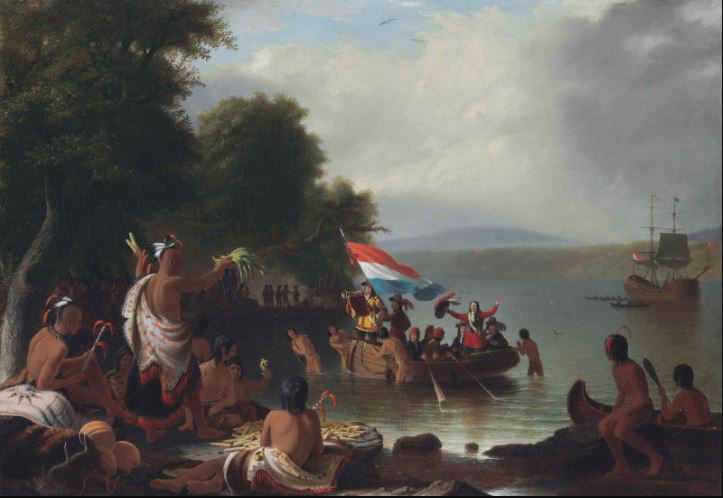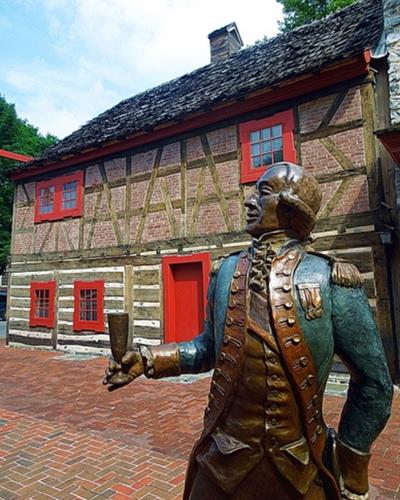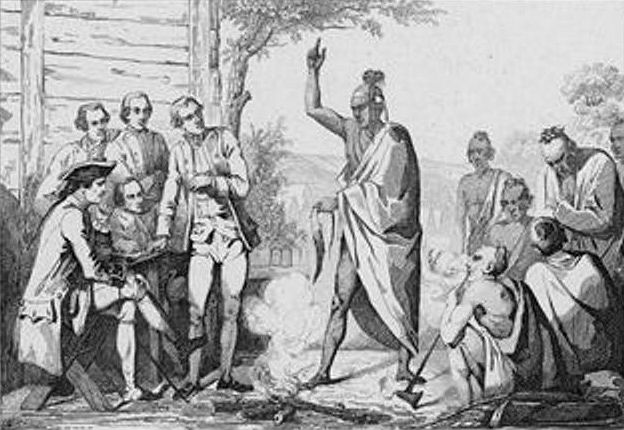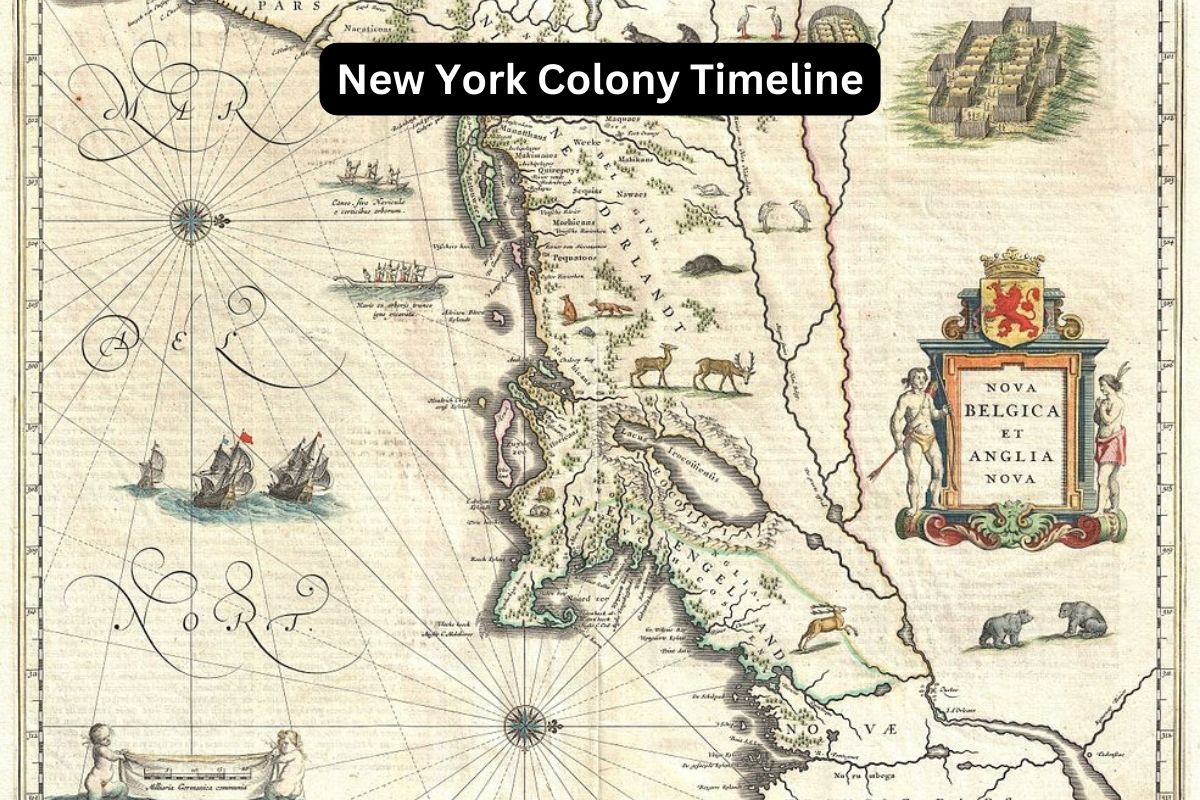The history of the New York Colony is a captivating journey through time, marked by dynamic transitions and pivotal moments.
Originally settled by the Dutch as New Netherland and later captured by the English, it transformed from a Dutch trading post to an English royal colony, and eventually played a central role in the American Revolutionary War.
Over the centuries, New York witnessed waves of immigration, cultural diversity, and the rise of iconic landmarks, such as the Statue of Liberty.
This historical timeline showcases the rich and ever-evolving tapestry of the New York Colony, a place that has left an indelible mark on American history and culture.
| Year | Event |
|---|---|
| 1609 | Henry Hudson explores the region |
| 1624 | Establishment of New Netherland |
| 1626 | Purchase of Manhattan Island |
| 1664 | New Amsterdam captured by the English |
| 1673 | New York briefly under Dutch control |
| 1674 | Return of New York to English control |
| Late 17th Century | New York becomes a royal colony |
| Early 18th Century | New York City’s growth as a trading hub |
| Mid-18th Century | French and Indian War in New York |
| 1765 | Stamp Act Congress in New York City |
| 1776 | American Revolutionary War battles in New York |
| 1785 | New York City as the U.S. capital |
| 1797 | Albany becomes the capital of New York State |
| 19th Century | Immigration waves and cultural growth |
| 1886 | Dedication of the Statue of Liberty |
Timeline of the New York Colony
1609 – Henry Hudson explores the region
In 1609, the English explorer Henry Hudson embarked on a voyage in search of a northwest passage to Asia.
Sponsored by the Dutch East India Company, Hudson’s journey led him to the North American continent. He sailed up a river that would later bear his name, the Hudson River.
During this exploration, Hudson and his crew traveled up the river, reaching present-day New York state. This marked the first European contact with the region that would eventually become New York.

1624 – Establishment of New Netherland
In 1624, the Dutch West India Company established the colony of New Netherland. They did so with the intention of creating a trading post and a presence in North America.
The major settlements in New Netherland included Fort Orange, located in what is now Albany, and New Amsterdam, which later became New York City.
New Netherland was characterized by its diverse population, including Dutch settlers, Native Americans, and individuals from various European nations.
1626 – Purchase of Manhattan Island
One of the most famous events in the early history of New Netherland was the purchase of Manhattan Island from the Native Americans in 1626. The colony’s director-general, Peter Minuit, negotiated with the local Lenape people for the acquisition of the island.
The transaction was completed with the exchange of goods and trinkets valued at 60 Dutch guilders, which is often cited as the price for Manhattan, though its exact worth in today’s currency remains a subject of debate.
This transaction laid the foundation for the Dutch presence in the region and established New Amsterdam (lower Manhattan) as a trading and cultural center.
1664 – New Amsterdam captured by the English
In 1664, during the Second Anglo-Dutch War, English forces led by Colonel Richard Nicolls captured New Amsterdam, the capital of New Netherland, without significant resistance. This event marked the end of Dutch control in the region.
The English renamed the city New York in honor of James, the Duke of York, who would later become King James II of England. This change in leadership marked the beginning of the English colonial era in what would become the New York Colony.
1673 – New York briefly under Dutch control
During the Third Anglo-Dutch War, the Dutch briefly recaptured New York in 1673. The Dutch retook the city and renamed it New Orange, but their control was short-lived.
A year later, in 1674, the Treaty of Westminster was signed, ending the war and returning New York to English control as part of the peace settlement.
1674 – Return of New York to English control
The Treaty of Westminster, signed on February 19, 1674, formally ended hostilities between England and the Dutch Republic. As a result of the treaty, New York was returned to English rule, and the name New York was restored.
This marked the final transition of the colony from Dutch to English hands. Under English rule, New York continued to develop and grow, attracting a diverse population of settlers and becoming an important part of the English colonial system in North America.

Late 17th Century – New York becomes a royal colony
In the late 17th century, New York underwent significant changes as it transitioned from a Dutch colony to an English royal colony. The English established a more centralized system of governance in New York.
The colony was granted a royal charter in 1664, which ensured English legal and political institutions were introduced. This transition brought about changes in land ownership, government structure, and legal systems.
Over time, the Dutch influence on the colony’s culture and society began to wane, and English customs and practices became more prevalent.
Early 18th Century – New York City’s growth as a trading hub
During the early 18th century, New York City, strategically located at the mouth of the Hudson River, continued to grow as a major trading and commercial center.
The city’s natural harbor made it a hub for maritime trade, attracting merchants and entrepreneurs from various parts of the world.
The city’s economic prosperity was further boosted by its role as a center for the fur trade, as well as its connections to the Caribbean and Europe. New York City’s growth as a cosmopolitan and diverse urban center was well underway.
Mid-18th Century – French and Indian War in New York
The mid-18th century saw New York become a battleground during the French and Indian War (1754-1763), which was part of the larger global conflict known as the Seven Years’ War.
The conflict in North America centered on competition between British and French colonial interests. Several significant battles and campaigns took place in New York, including:
- The Battle of Fort Oswego
- The Battle of Fort William Henry
- The Battle of Quebec
The war had a significant impact on the region, leading to territorial changes and contributing to tensions that would eventually lead to the American Revolution.

1765 – Stamp Act Congress in New York City
In 1765, New York City hosted the Stamp Act Congress, a significant event in the lead-up to the American Revolution.
Representatives from nine American colonies gathered in the city to protest the Stamp Act, a tax imposed by the British Parliament on various paper documents and materials.
This congress marked one of the first instances of colonial unity in opposing British taxation policies without representation in Parliament. It played a role in shaping the sentiments that would eventually lead to the American colonies seeking independence from British rule.
1776 – American Revolutionary War battles in New York
The year 1776 was a pivotal one in the American Revolutionary War, and New York played a central role in the conflict. The British targeted New York as a key strategic location due to its significant harbor and geographic position.
The Battle of Long Island, fought in August 1776, saw British forces defeat American forces and led to the capture of New York City.
Subsequently, the city remained under British control for most of the war. The occupation of New York was marked by periods of tension and conflict between British troops and American patriots.
1785 – New York City as the U.S. capital
In 1785, New York City briefly served as the capital of the newly formed United States of America. The city was chosen as the provisional capital while a permanent capital was being sought.
During this time, the Congress of the Confederation, the precursor to the modern U.S. Congress, met in New York City.
However, this period was short-lived, as in 1790, the capital was relocated to Philadelphia while plans were made for the construction of the new federal capital, Washington, D.C.
1797 – Albany becomes the capital of New York State
In 1797, the city of Albany was designated as the capital of New York State. The decision to move the state capital from New York City to Albany was influenced by various factors, including Albany’s more central location within the state and the desire to reduce the influence of the city on state politics. Albany has since served as the capital of New York, playing a significant role in state government and politics.
19th Century – Immigration waves and cultural growth
The 19th century saw significant waves of immigration to New York, which profoundly shaped the state’s culture and demographics. Irish immigrants arrived in large numbers, particularly during the Irish Potato Famine in the 1840s.
They settled in cities like New York City and played a significant role in the development of the city’s culture and politics. Similarly, German immigrants also made substantial contributions to the state’s cultural diversity.
New York City, in particular, became a melting pot of different cultures and ethnicities, leading to the development of neighborhoods like Chinatown and Little Italy.
This era also witnessed the construction of iconic structures, including the Brooklyn Bridge, which was completed in 1883 and connected Manhattan and Brooklyn, further facilitating urban growth.
1886 – Dedication of the Statue of Liberty
The Statue of Liberty, a symbol of freedom and democracy, was dedicated on October 28, 1886, on Liberty Island in New York Harbor. The statue was a gift from the people of France to the United States and was designed by the French sculptor Frédéric Auguste Bartholdi.
It has since become one of the most recognizable landmarks in the United States and a symbol of welcome to immigrants arriving in New York City.
The Statue of Liberty stands as a testament to the ideals of liberty and freedom that have been central to the identity of the United States and New York as a gateway for immigrants seeking a better life in the New World.
